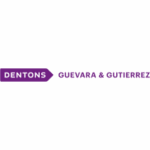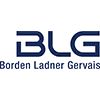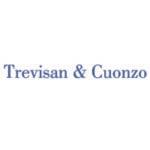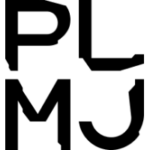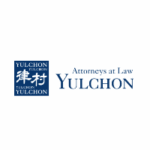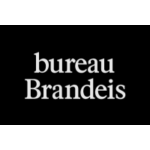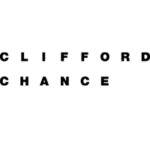-
What types of conduct and causes of action can be relied upon as the basis of a competition damages claim?
Under the Anti-Monopoly Law (“AML”, amended in 2022) of the People’s Republic of China (“PRC”), a competition damages claim may be brought by undertakings who suffered losses due to prohibited monopolistic conducts — (1) the conclusion and implementation of a monopoly agreements, (2) abuse of dominant market position, and (3) the concentration of undertakings that have or may have the effect of eliminating or restricting competition. These categories are further reflected and subdivided in the Supreme People’s Court’s (“SPC”) Notice on the Promulgation of the Revised Regulations on Causes of Action for Civil Cases (2020) — for example, monopoly agreements are classified into horizontal monopoly agreements and vertical monopoly agreements; abuse of dominant market position are subdivided into various types of abusive conducts.
Although PRC law recognises actions against anti-competitive concentrations of undertakings as a valid legal basis for competition damages claims, to date, no such cases have been publicly reported in practice.
-
What is required (e.g. in terms of procedural formalities and standard of pleading) in order to commence a competition damages claim?
To initiate a competition damages claim, the claimant must comply with both the general procedural requirements set out in the Civil Procedure Law (“CPL”), and the specific rules laid down in the Interpretation of the Supreme People’s Court on Several Issues concerning the Application of Law in the Trial of Monopoly-related Civil Dispute Cases (“2024 Judicial Interpretation“).
Under the CPL, the following conditions must be satisfied:
- The claimant(s) must be a natural person(s), legal person(s) and other organisation(s) with a direct interest in the case.
- The claimant(s) must identify a specific defendant(s).
- The pleading must include specific claims, facts and reasons; and
- The case must fall within the scope of civil disputes accepted by the courts and under the jurisdiction of the court where the lawsuit is filed.
Notably, as explicitly provided in the 2024 Judicial Interpretation, the court will not accept claims that merely seek a determination of the defendant’s monopolistic conduct without requesting corresponding civil liability. The 2024 Judicial Interpretation also clarifies that a prior administrative finding or a formal decision of monopoly violations is not a prerequisite for bringing a private action.
-
What remedies are available to claimants in competition damages claims?
Competition damages claims, as a form of civil litigation and a kind of tort litigation in general, enable claimants to pursue multiple civil remedies – most commonly cessation of infringements and compensation for losses. The 2024 Judicial Interpretation has expanded these remedial options by empowering courts to order defendants to implement necessary restorative measures when simply stopping the monopolistic conduct would be inadequate to eliminate its anti-competitive effects.
-
What is the measure of damages? To what extent is joint and several liability recognised in competition damages claims? Are there any exceptions (e.g. for leniency applicants)?
Under PRC antitrust regime, competition damages follow compensatory principles. Article 44 of the 2024 Judicial Interpretation expressly provides that recoverable damages include both actual losses and reasonably expected profits lost resulting from anticompetitive conduct. Furthermore, pursuant to Article 45 of 2024 Judicial Interpretation, reasonable expenses – including fees for market survey, economic analysis, attorneys, among others – incurred in the investigation and prevention of the monopolistic conduct may also be recoverable, subject to the claimant’s claims and the case circumstances.
As for the calculation of damages, Articles 44, 46, and 47 of the 2024 Judicial Interpretation offer more detailed guidance. Specifically,
- Firstly, as a general rule, when determining the loss suffered by the claimant from the alleged monopolistic conduct, the court may consider the following factors:
- Market indicators (commodity prices, operating costs, profits, and market shares, among others) in the relevant market before or after and during the implementation of the alleged monopolistic conduct;
- Same metrics as above in comparable markets unaffected by the monopolistic conduct;
- Same metrics as above of comparable undertakings unaffected by the monopolistic conduct; and
- Other factors that can reasonably prove the loss suffered by the claimant.
- Secondly, where the claimant has proven that the monopolistic conduct caused losses, but precise quantification is difficult based on the above-mentioned factors, the court may render reasonable estimates considering the nature, extent, duration, and benefits derived from the conduct, subject to the claimant’s claims and available evidence.
- Thirdly, where multiple alleged monopolistic acts are interrelated and have caused an indivisible overall loss to the claimant in the same or several relevant markets, the court shall assess the damages in a holistic manner. Conversely, if the alleged acts are independent and have caused separate losses in different relevant markets, the court may assess the damages separately.
- Fourthly, horizontal monopoly agreement participants cannot claim damages against co-conspirators for self-incurred losses.
With respect to liability, as competition damages claims fall within the scope of civil litigation – specifically tort actions – they are also governed by the Civil Code. Article 1168 of the Civil Code provides that where two or more parties jointly commit an infringement, they shall bear joint and several liabilities. From the antitrust context, this means that all co-infringers—such as cartel participants—can be held liable for the entire amount of damages, and the claimant is entitled to seek full compensation from any one or more of them. This principle has been reaffirmed by the SPC in its rulings on recent cartel-related litigation case ((2023) Zui Gao Fa Zhi Min Zhong No.653).
There is currently no provision under the PRC AML that exempts leniency applicants or other parties from civil liability. However, anticipated institutional coordination between courts and competition authorities would be strengthened progressively, and it cannot be excluded that the leniency applicants and their relevant actions might be taken into account by courts.
- Firstly, as a general rule, when determining the loss suffered by the claimant from the alleged monopolistic conduct, the court may consider the following factors:
-
What are the relevant limitation periods for competition damages claims? How can they be suspended or interrupted?
The limitation period for competition damages claims is primarily governed by the Civil Code, with further clarification provided in the 2024 Judicial Interpretation. Pursuant to Article 188 of the Civil Code and Article 49 of 2024 Judicial Interpretation, the standard limitation period for bring competition damages claims is three years, commencing when the claimant knew or should have known both: (i) the occurrence of the anticompetitive infringement, and (ii) the identity of the liable party.
For suspension and recalculation of the limitation period, Articles 194 & 195 of the Civil Code sets out specific scenarios:
- If, during the final six months of the limitation period, the claimant is unable to assert the claims due to certain legal obstacles (e.g., force majeure, lack of legal capacity, or being under the defendant’s/third party’s control), the limitation period will be suspended. In such cases, the clock will resume six months after the obstacles are removed.
- The limitation period shall also be suspended under certain circumstances and re-calculated once the relevant circumstances are resolved – (i) the obligee demands performance from the obligor; (ii) the obligor agrees to perform the obligation; (iii) the obligee initiates litigation or arbitration; or (iv) other actions that have the same legal effect as initiating litigation or arbitration.
For circumstance when administrative proceeding is involved, under the 2024 Judicial Interpretation, if the claimant files a complaint with the competition authority, the limitation period shall be suspended during the administrative investigation, and will recommence (i) either from the date on which the claimant becomes aware (or should have become aware) of the authority’s decision not to pursue a case, to withdraw the case, or to terminate the investigation, or (ii) from the date a final administrative decision finding monopolistic conduct takes effect.
For absolute limitation period, the competition damages claims shall be subject to a long-stop limitation under Article 188 of the Civil Code, which generally bars claims brought more than 20 years after the infringing act, unless exceptional circumstances justify an extension (subject to court approval).
For special rules for injunctive relief, Article 196 of the Civil Code exempts claims for injunctive relief (e.g., cessation of ongoing infringement) from statutory limitation period, allowing claimants to seek ongoing behavioural remedies (e.g., stopping cartel conduct) regardless of time elapsed.
-
Which local courts and/or tribunals deal with competition damages claims?
According to Article 4 of the 2024 Judicial Interpretation, first-instance jurisdiction over civil monopoly cases is exclusively vested in the intellectual property courts (China has established four intellectual property courts in Beijing, Shanghai, Guangzhou, and Hainan) or the intermediate people’s court designated by the SPC.
For appellate review, the SPC’s Intellectual Property Tribunal, established pursuant to the Provisions of the Supreme People’s Court on Several Issues Concerning the Intellectual Property Court, exercises direct jurisdiction over appeals from first-instance monopoly civil cases, bypassing provincial high courts to ensure uniform application of antitrust law.
This specialised jurisdictional framework reflects China’s institutional approach to antitrust adjudication, where the technical expertise of IP courts and designated intermediate courts in handling complex economic analysis of monopoly cases is combined with the SPC’s direct oversight through its specialised tribunal, thereby enhancing both judicial efficiency and consistency in antitrust enforcement while aligning with the broader policy objective of strengthening professionalised antitrust adjudication.
-
How does the court determine whether it has jurisdiction over a competition damages claim?
The courts determine the jurisdiction over competition damages claims by applying both the CPL and the 2024 Judicial Interpretation.
Under Article 5 of the 2024 Judicial Interpretation, the territorial jurisdiction follows established rules for tort and contractual disputes. For tort claims, Article 29 of the CPL grants jurisdiction to courts where (1) the tortious act occurred; (2) the tortious consequences took place; or (3) the defendant is domiciled. For contractual claims, Article 24 and 35 of the CPL provide that jurisdiction lies with courts where (1) the contract was performed; or (2) the defendant is domiciled. Parties to the contract may also agree to submit disputes to courts in locations with actual connections to the case, including defendant’s or claimant’s domicile, places of contract performance or execution, or where the subject matter is located, among others.
Regarding the hierarchical jurisdiction, please see Q6.
Notably, the 2024 Judicial Interpretation explicitly states that arbitration clauses in contracts do not preclude court jurisdiction over monopoly-related civil disputes.
-
How does the court determine what law will apply to the competition damages claim?
With respect to substantive rules, the applicable law for competition damages claims is primarily the AML, the 2024 Judicial Interpretation and, at a more general level, the Civil Code.
As for procedural matters, the court will apply the 2024 Judicial Interpretation, the CPL and relevant judicial interpretations.
-
What is the applicable standard of proof?
The standard of proof in competition damages claims follows the general civil litigation principle of “balance of probabilities” under Article 90 of the Supreme People’s Court’s Interpretation of the Civil Procedure Law (2022 Amendment) (“2022 Interpretation of the CPL”) – each party must present evidence to support the facts on which it relies and failure to meet this requirement may result in adverse consequences. While maintaining the fundamental evidentiary doctrine that “he who asserts must prove”, the 2024 Judicial Interpretation introduces specialised rules that modify and refine the burden of proof requirements in antitrust litigation. Specifically,
- Presumption of basic facts:
Basic facts recognised in administrative decisions that have found monopolistic conduct to exist—where such decisions have either not been challenged via administrative litigation within the statutory period or have been confirmed by a final court judgment—require no further proof in subsequent civil litigation, alleviating claimant’s burden of proof on complex economic issues, such as defining relevant markets and providing market dominance.
- Reallocation of burden of proof:
– Monopoly agreements
In cases involving core cartel agreement and resale price maintenance (RPM), the claimant shall prove the existence of a monopoly agreement, the damages suffered and the causal link in between. However, Article 14 relieves claimants from defining the relevant market; Article 21 stipulates that, for RPM cases, the defendant bears the burden of demonstrating that the agreement does not have the effect of eliminating or restricting competition. For other non-price-related vertical agreements, the burden of proving the anti-competitive effect remains with the claimant.
The framework also contemplates a potential “safe harbour” defense for vertical agreements, whereby defendants could avoid liability by demonstrating that their market share falls below thresholds to be established by anti-monopoly enforcement agencies, provided other specified conditions are met. However, this defense mechanism remains inoperative pending the issuance of relevant implementing regulations.
Where the defendant seeks to invoke statutory exemptions under Article 20(1)(i)–(v) of the AML—including justifications such as technological improvement, efficiency enhancement, or public interest consideration—Article 27 requires the defendant to establish that the agreement serves a legitimate purpose, employs proportionate means, does not substantially restrict competition, and delivers consumer benefits.
– Abuse of market dominance
Under Article 28, the claimant bears the burden to prove that the defendant holds a dominant position in the relevant market, such position has been abused, the damages suffered, and the causal link in between. Should the defendant seeks to advance an objective justification defense—such as legitimate business needs or efficiency gains—the burden shifts to the defendant to substantiate such claims with appropriate evidence.
-
To what extent are local courts bound by the infringement decisions of (domestic or foreign) competition authorities?
The PRC courts are not formally bound by either domestic or foreign administrative decisions in the relevant antitrust cases; however, domestic decisions can carry significant evidentiary weight (please see Q9 for the evidentiary effect of administrative decision).
-
To what extent can a private damages action proceed while related public enforcement action is pending? Is there a procedure permitting enforcers to stay a private action while the public enforcement action is pending?
PRC antitrust law does not impose a statutory rule mandating courts to stay private damages actions during pending public enforcement proceedings. However, Article 13 of the 2024 Judicial Interpretation empowers courts with discretionary authority to suspend civil proceedings when parallel investigations by competition authorities are underway, particularly to prevent conflicting determinations and promote procedural efficiency.
In practice, concurrent proceedings frequently emerge from the same underlying facts—where administrative investigations (potentially triggered by complaints from affected parties) and civil damages claims proceed simultaneously. Notably, the initiation of private antitrust litigation may itself draw regulatory scrutiny, potentially prompting competition authorities to commence their own investigations. Furthermore, administrative penalty decisions often serve as catalysts for follow-on civil actions, as aggrieved parties leverage established findings of violation to pursue compensation for losses resulting from the adjudicated monopolistic conduct. This interplay between public enforcement and private litigation continues to develop under the strengthened coordination mechanisms introduced by the 2024 Judicial Interpretation.
-
What, if any, mechanisms are available to aggregate competition damages claims (e.g. class actions, assignment/claims vehicles, or consolidation of claims through case management)? What, if any, threshold criteria have to be met?
While PRC antitrust regime does not provide for class actions in the form familiar to common law jurisdictions, the CPL and the AML offer several procedural mechanisms that serve similar functions in aggregating competition damages claims:
- Joint action: under Article 55 of the CPL, when multiple claimants or defendants are involved in a dispute with shared or the same type of subject matter, the court may consolidate cases into a joint action with the parties’ consent. Depending on the nature of the subject matter, it may be divided into necessary joint action and unnecessary joint action. Specifically,
- Necessary joint action, where the parties share an indivisible interest in the subject matter of the dispute , must be adjudicated jointly, and a procedural act by one party (e.g., admission, waiver) binds others if acknowledged.
- Unnecessary joint action, where the claims involve the same type of subject matter, but the parties’ rights and obligations are not inherently interconnected and their claims are independent (e.g., multiple victims of the same monopolistic conduct), may be tried jointly based on judicial efficiency and parties’ consent, and the procedural acts by one party do not bind others unless expressly agreed.
- In practice, the SPC has clarified that horizontal monopoly agreement cases may qualify as unnecessary joint actions due to interconnected claims, but are not inherently “necessary” joint actions. Claimants may sue some or all cartel members and seek joint and several liability for all or part of the damages incurred.
- Public interest litigation: according to Article 60 of the AML and Article 12 of the 2024 Judicial Interpretation, the people’s procuratorate at the municipal level with subordinate districts or above may file civil public interest litigation if monopolistic conduct harms public interests (e.g., price-fixing in pharmaceuticals, exclusionary practices in utilities). According to the White Paper on Public Interest Litigation by the Supreme People’s Procuratorate (2024), a total of 16 antitrust public interest lawsuits were filed across China in 2024, accounting for only one in ten thousand of the approximately 160,000 public interest cases handled nationwide that year – such cases remain relatively rare in practice.
- Joint action: under Article 55 of the CPL, when multiple claimants or defendants are involved in a dispute with shared or the same type of subject matter, the court may consolidate cases into a joint action with the parties’ consent. Depending on the nature of the subject matter, it may be divided into necessary joint action and unnecessary joint action. Specifically,
-
Are there any defences (e.g. pass on) which are unique to competition damages cases? Which party bears the burden of proof?
PRC antitrust regime currently lacks explicit statutory provisions governing the treatment of “passing-on” defenses and other specialised defenses in competition damages cases. Although the 2022 exposure draft of the AML Judicial Interpretation proposed a passing-on rule—allowing courts to deduct damages if the defendant proved claimants had passed on all or part of the losses to others—this provision was ultimately omitted from the final enacted version. This reflects the regime’s cautious approach to this complex issue and leaves significant room for judicial and legislative development.
Despite the absence of formal rules on passing-on defenses, Chinese courts have recognised the standing of indirect purchasers to bring antitrust claims. In the case Tian Junwei v. Carrefour et al. Monopolization Dispute [case No. (2014) Jing Zhi Min Chu Zi No.146], the court affirmed that PRC antitrust legislation framework “does not exclude indirect purchasers’ right to bring an anti-monopoly civil litigation.” However, Beijing IP Court did not expand further on any specific rules such as the standard for recognising an indirect purchaser or the process to be applied.
-
Is expert evidence permitted in competition litigation, and, if so, how is it used? Is the expert appointed by the court or the parties and what duties do they owe?
The expert evidence is permitted and commonly used in competition litigation in the PRC, especially in cases involving intricate and challenging issues related to market definition, dominance assessment, or evaluation of anti-competitive effects.
Pursuant to the 2024 Judicial Interpretation and the 2022 Interpretation of the CPL, parties may apply to the court to have one or two individuals with specialised knowledge—typically economists or industry experts—to appear in court and provide opinions on specific issues. Such opinions are treated as party statements in nature.
In addition, experts may also be engaged to submit market survey reports or economic analyses. Parties can either jointly select an expert or, if they fail to agree, request a court appointment. Courts assess such expert submissions under standards similar to those for appraisers, scrutinising their independence, methodological rigour, and relevance to the disputed issues. While no specific statutory framework defines experts’ obligations in antitrust cases, they are generally expected to adhere to the same standards as court-appointed appraisers.
-
Describe the trial process. Who is the decision-maker at trial? How is evidence dealt with? Is it written or oral, and what are the rules on cross-examination?
Competition damages claims are adjudicated under the civil litigation framework, primarily governed by the CPL and supplemented by relevant judicial interpretations. The trial process generally involves three stages:
- Court investigation – The fact-finding phase where parties present evidence, engage in cross-examination, and address the court’s inquiries. This stage typically consumes the most time and follows a structured sequence in principle: (1) claimant and defendant statements (pleadings and defenses); (2) evidence presentation and cross-examination (documentary evidence oriented); (3) expert testimony (if applicable) and cross-examination; (4) court-introduced evidence (if applicable) and cross-examination; (5) judicial questioning (the court clarifies factual disputes through direct interrogation of the parties). The above cross-examination will be conducted orally before the court and the parties have the rights to submit a written opinion to the court.
- Court debate – Parties present oral arguments, rebut opposing positions, and engage in structured debate on contested legal and factual issues.
- Closing statement – A final opportunity for each side to concisely summarise their case.
In terms of evidence, the principle of “he who asserts must prove” generally applies and evidence must be submitted during designated evidence exchange periods. Evidence may include documentary evidence, witness testimony, expert opinions, judicial appraisals, and electronic data, among others. The 2022 Interpretation of the CPL and the 2024 Judicial Interpretation provide detailed guidance on how the court shall evaluate relevant evidence and expert submissions, and the judge decides whether to accept the evidence according to the above rules.
-
How long does it typically take from commencing proceedings to get to trial? Is there an appeal process? How many levels of appeal are possible?
Chinese courts adhere to statutory timelines under the CPL when handling competition damages claims, though certain flexibilities exist in practice. For standard domestic cases, the CPL mandates specific procedural deadlines.
- First-instance proceedings: Article 126 mandates that courts docket compliant cases within seven days of filing and notify the parties. Ordinary civil cases should conclude within six months from docketing, with potential six-month extensions approved by the court president. More complex cases may receive additional extensions upon higher court authorisation (Article 152).
- Appellate process: Antitrust appeals follow specialised procedures before the Supreme People’s Court’s Intellectual Property Tribunal. Litigants must file appeals within 15 days for judgments or 10 days for rulings, submitting petitions through the original trial court (Article 172). The SPC generally concludes judgment appeals within three months (extendable with presidential approval) and ruling appeals within 30 days (Article 183) following the SPC’s docket of the case.
- A retrial mechanism: A party that deems that there is an error in a judgment or ruling in effect may apply for a re-trial. Article 211 provides an exceptional recourse for final judgments, though courts apply stringent standards that limit its use in competition cases.
- Special considerations: Notably, cases involving foreign parties are exempt from standard timelines and the review period is not clearly limited. For example, in Standard Essential Patent (“SEP”)-related disputes, jurisdictional challenges often prolong pretrial phases by several months or even over a year.
-
Do leniency recipients receive any benefit in the damages litigation context?
Under PRC antitrust regime, there is no statutory provision or well-established judicial precedent that grants leniency applicants preferential treatment or relief in follow-on damages litigation. While the AML and its implementing regulations provide incentives for monopoly agreement participants to self-report through administrative leniency programs, this protection does not extend to civil liability for damages.
-
How does the court approach the assessment of loss in competition damages cases? Are “umbrella effects” recognised? Is any particular economic methodology favoured by the court?
Please see Q4 for the measurement of loss in competition damages.
There is currently neither a clear statutory definition of “umbrella effects” nor established judicial practice under PRC law regarding the application or the recoverability of related damages. It remains to be seen whether, and to what extent, the concept of umbrella effects will be recognised in practice.
PRC courts have not shown a preference for any particular economic methodology; instead, they appear to adopt a case-by-case approach, assessing the appropriateness, relevance, and credibility of the methods presented by the parties, as well as the robustness of underlying data.
-
How is interest calculated in competition damages cases?
While Article 44 of the 2024 AML Judicial Interpretation broadly defines recoverable losses to include both actual damages and lost anticipated profits – which could theoretically encompass interest – the regime contains no explicit provisions governing interest awards in competition cases.
Judicial practice reveals different approaches when claimants have sought to recover interest as part of their damages claims: while a few decisions have recognised interest as a compensable component of damages, others have entirely denied interest recovery. This divergence may stem from no standardised methodology for interest calculation, unclear application of simple or compound interest and applicable interest rates, claimants’ sufficient evidence, and uncertain accrual period, among others.
In light of the above, the standard and methodology for calculating interest in competition damages cases remain unsettled.
-
Can a defendant seek contribution or indemnity from other defendants? On what basis is liability allocated between defendants?
As noted in Q4, when multiple undertakings jointly engage in monopolistic conduct, they bear joint and several liability under Articles 178 and 1168 of the Civil Code. This means claimants may seek full compensation from any one or more defendants, irrespective of their individual participation levels.
Among the liable defendants, if responsibility can be differentiated, liability is apportioned according to each party’s degree of fault; if responsibility cannot be reasonably divided, liability is presumed equal among all defendants. A defendant that pays more than its allocated share may pursue reimbursement and seek indemnity from co-defendants.
-
In what circumstances, if any, can a competition damages claim be disposed of (in whole or in part) without a full trial?
Chinese courts may resolve antitrust claims without a full trial under the following circumstances:
- Dismissal at case-filing stage: if, after accepting the filing, the court determines that the claim does not comply with the statutory requirements for initiating legal action in the CPL and the specific requirements under the 2024 Judicial Interpretation (see Q2 for details), it will issue a ruling to dismiss the case.
- Voluntary or deemed withdrawal: the claimant may apply to withdraw the claim voluntarily, subject to the court’s approval. The court may deem the case withdrawn if the claimant (1) fails to pay the case acceptance fee after being notified by the court, or (2) fails to attend the hearing without a justified reason after being duly summoned, or (3) leaves the courtroom without permission.
- Settlement or mediation: the parties may resolve disputes via settlement agreements or court-mediated compromises. In such cases, the court may issue a civil ruling or a mediation statement to confirm the settlement. These documents carry the same legal force as a judgment and effectively dispose of the claim without the need to proceed to the evidentiary phase.
- Procedural dismissal: in certain situations, the court may dismiss a case and issue a procedural dismissal where the defendant raises a statute of limitations defense and the court finds the defense valid upon review, or where the disputes fall under the scope of administrative litigation or competent authority’s jurisdiction.
-
What, if any, mechanism is available for the collective settlement of competition damages claims? Can such settlements include parties outside of the jurisdiction?
Under PRC law, while there is no standalone mechanism for collective settlement of competition damages claims akin to U.S.-style class action settlements, the joint action system (see Q12 for details) under the CPL offers an alternative pathway for resolving related claims collectively.
Settlements reached in the joint action – whether necessary or unnecessary joint actions – if accepted by the court, will be binding only on those parties who have both joined the litigation and expressed their consents (Articles 55 and 56 of the CPL). Crucially, the law provides no basis for binding non-participating parties to such settlements, regardless of whether they are domestic or foreign entities.
In principle, foreign claimants may participate in these proceedings and be bound by resulting settlement if they submit to the court’s jurisdiction and comply with applicable principles of comity, reciprocity, or relevant treaties. However, the binding effect depends entirely on active participation in the litigation – no party (regardless of whether they are located domestically or abroad) can be bound by a joint action settlement unless they have actually joined the case and consented to its terms.
-
What are the rules for disclosure of documents (including documents from the competition authority file or from other third parties)? Are there any exceptions (e.g. on grounds of privilege or confidentiality, or in respect of leniency or settlement materials)?
The process for document disclosure (including the provision and collection of evidence) in competition litigation is primarily governed by the CPL and relevant judicial interpretations, embodying the foundational principle of “he who asserts must prove” (see Q9 for details).
While parties primarily shoulder the burden of producing evidence to substantiate their claims or defenses, the legal system acknowledges practical challenges in evidence acquisition and provides judicial assistance / intervention mechanisms. Under the CPL and the 2022 Interpretation of the CPL, where a party encounters objective obstacles in obtaining evidence—such as documents held by government authorities that are inaccessible to private parties—they may petition the court to exercise its investigatory powers to collect such evidence on their behalf. This principle is reaffirmed in the 2024 Judicial Interpretation, expressly authorizing courts, upon application, to request the antitrust enforcement authority to clarify or explain aspects of their monopoly determinations when such input proves relevant to pending civil cases.
Notably, unlike common law systems with established evidentiary privileges like attorney-client protection, PRC legal framework does not incorporate broad statutory exemptions for categories such as leniency materials or settlement communications in civil proceedings. That said, sensitive materials involving state secrets, trade secrets, or personal privacy receive special procedural safeguards (as detailed in Q24), reflecting the system’s calibrated approach to balancing evidentiary accessibility with legitimate confidentiality concerns in antitrust litigation.
-
What procedures, if any, are available to protect confidential or proprietary information disclosed during the court process?
The handling of evidence in competition cases follows the general evidentiary rules established by the CPL and its judicial interpretations. The CPL and Article 103 of the 2022 Interpretation of the CPL mandate that all evidence must undergo open court presentation and cross-examination between parties as the fundamental principle. However, this transparency requirement yields to confidentiality protections when evidence concerns state secrets, trade secrets, or personal privacy, in which case the court must implement appropriate safeguards against public disclosure.
The regime further incorporates specific protections for settlement discussions through Article 107 of the 2022 Interpretation of the CPL, which establishes that facts admitted to reach a settlement or mediation shall not be used to the detriment of the party in subsequent proceedings, unless otherwise provided by law or agreed by both parties.
-
Can litigation costs (e.g. legal, expert and court fees) be recovered from the other party? If so, how are costs calculated, and are there any circumstances in which costs recovery can be limited?
In PRC antitrust litigation framework, the allocation and recovery of litigation costs follow established rules while incorporating antitrust-specific considerations.
Based on the CPL and the Measures on the Payment of Litigation Costs, the losing party typically bears the litigation costs, including case acceptance fees, application fees, and necessary witness or expert expenses. Courts retain discretion to apportion costs in cases of partial success or joint litigation, reflecting the parties’ respective outcomes. Settlements or voluntary withdrawals qualify for reduced case acceptance fees, with the standard fee halved in such instances.
The 2024 Judicial Interpretation introduces significant antitrust-specific provisions through Article 45, expressly permitting claimants to recover reasonable expenses directly tied to investigating and preventing monopolistic conduct – such as fees for market survey, economic analysis, attorneys, among others – as part of the damages award, provided these costs are proportionate and properly substantiated and subject to the claimant’s claims and the case circumstances. While there are no specific statutory limitations on the types of recoverable costs in competition litigation, courts typically apply a “reasonableness” standard.
This recovery mechanism applies even to horizontal cartel participants, who while barred from claiming economic damages under the AML, may still seek reimbursement for legitimate investigation and enforcement expenses, as demonstrated in the precedent-setting Shanghai Huaming v. Wuhan Taipu case where the SPC upheld such recovery despite rejecting the core damages claim – as those expenses are conducive in preventing monopolistic conduct.
-
Are third parties permitted to fund competition litigation? If so, are there any restrictions on this, and can third party funders be made liable for the other party’s costs? Are lawyers permitted to act on a contingency or conditional fee basis?
PRC legal framework currently lacks specific regulations governing third-party litigation funding, leaving this practice largely untested in antitrust cases. Under prevailing rules, third-party funders generally avoid liability for adverse costs unless they formally join the litigation as parties.
As for contingency or conditional fee arrangements, according to the Opinions on Further Regulating Lawyers’ Fees, such arrangements are strictly limited in scope: they are prohibited in certain types of cases, including administrative litigation, criminal proceedings, state compensation claims, group actions, and claims involving personal welfare (e.g., pensions, alimony, minimum subsistence allowances).
For permitted cases – including competition damages claims – contingency fees face strict controls:
- Fee Caps: Progressive limits apply (e.g., no more than 18% for recoveries under RMB1 million; no more than 6% for amounts exceeding RMB50 million), whether calculated as percentages or fixed sums.
- Transparency Mandates: Lawyers must execute written agreements explicitly detailing the risk-sharing nature, maximum fees, and potential downsides of contingency arrangements.
- Conduct Restrictions: Firms may neither impose unreasonable terms (e.g., blocking settlements/appeals) nor exploit their advisory role in structuring agreements.
-
What, in your opinion, are the main obstacles to litigating competition damages claims?
Navigating competition damages claims in China presents a formidable landscape, primarily due to persistent hurdles in establishing proof, overcoming practical technical and economic complexities, and accurately quantifying damages.
- Firstly, Evidentiary Burdens and Proof Challenges. Historically, claimants faced steep hurdles in proving competition cases. Data from 2010 to 2019 clearly illustrates this challenge: claimants lost over 70% of 309 monopoly dispute lawsuits. Among these cases, more than 80% were filed under the cause of action for abuse of market dominance, with claimant loss rates in such cases nearing 90%, primarily due to difficulties in proving the foundational element of defining the relevant market.
The 2024 Judicial Interpretation, however, introduces critical mitigations through targeted adjustments to the burden of proof (see Q9 for details). For instance, presumption of facts with a finalised administrative decision, burden shifting for RPM cases.
- Secondly, Technical and Procedural Complexities – stem from their inherent high technical and economic barriers, leading to protracted proceedings and considerable time and financial burdens for all parties involved. While ordinary procedures theoretically dictate that courts should conclude cases within six months of filing, complex antitrust cases (especially with foreign parties) frequently encounter jurisdictional disputes or require rigorous technical and economic analyses, significantly prolonging proceedings.
This challenge is especially pronounced in industries with complex technologies and value chains. A notable example is the rare earth permanent magnet material abuse of dominance case (the Hitachi Metal case). The court dismissed the claimant’s claim because it failed to sufficiently define a favourable relevant market—a foundational element in antitrust litigation. The court was not persuaded by the claimant’s economic and technical submissions, underscoring the substantial expertise required even to reach a substantive review of such cases.
- Thirdly, Quantifying Damages. While the 2024 Judicial Interpretation provides some refinement on the scope of damages based on the AML – actual losses, lost expected gains, reasonable expenses – further guidance is still needed in competition cases involving complex technical and economic factors. Critical gaps remain – no prescribed methodologies (courts lack guidance on calculating damages in technically dense sectors, e.g., SEP licensing, digital markets), inconsistent Standards (some courts award interest or lost profits, while others reject), and limited precedents (high-value damages rulings are rare, leaving uncertainty for claimants). This creates significant ambiguity for claimants trying to substantiate losses from alleged monopolistic conduct.
-
What, in your opinion, are likely to be the most significant developments affecting competition litigation in the next five years?
The next five years may see two particularly significant developments that profoundly affect competition litigation in China:
- The coordination between public and private enforcement is expected to deepen and become more institutionalised. With the 2024 Judicial Interpretation now in effect, the importance of alignment between the antitrust enforcement authorities and the courts is explicitly emphasised. Notably, mechanisms for collaboration are already materialising in practice. For instance, follow-on civil damages litigation associated with antitrust enforcement decisions, such as the “unspecified wall-mounted boiler” bundling case, demonstrates converged administrative and judicial efforts. Additionally, the issuance of regional documents, such as the Implementation Opinions on Strengthening the Coordination and Collaboration Between Anti-Monopoly Administrative Enforcement and Judicial Proceedings (Shandong Province), indicates a broader, systemic trend. These developments signal a move towards seamless integration of administrative findings into private litigation; which stands to significantly reduce the burden of proof on claimants and, consequently, improve overall procedural efficiency in competition cases. This trend will likely solidify further, making it easier for private litigants to leverage prior administrative decisions.
- Another major development will be the increased judicial attention and activity in competition litigation across key sectors, including areas like digital platforms, healthcare, public utilities, education, and emerging technologies. The SPC has already underscored the importance of strengthening antitrust adjudication in areas closely related to public welfare and innovation, clearly demonstrating a growing willingness to address anti-competitive concerns in these critical markets, with internet platforms being a particular focus.
In particular, the 2024 Judicial Interpretation introduces specific provisions that clarify the applicable rules for cases involving digital platforms and the broader digital economy. These include tailored guidance on the definition of relevant markets, the evidentiary requirements for identifying algorithmic collusion, and the criteria for establishing market dominance in the context of the platform-enterprises. As these areas continue to evolve, courts are expected to play a more active role in developing a body of jurisprudence that is responsive to the unique features and competition risks of digital markets.
China: Competition Litigation
This country-specific Q&A provides an overview of Competition Litigation laws and regulations applicable in China.
-
What types of conduct and causes of action can be relied upon as the basis of a competition damages claim?
-
What is required (e.g. in terms of procedural formalities and standard of pleading) in order to commence a competition damages claim?
-
What remedies are available to claimants in competition damages claims?
-
What is the measure of damages? To what extent is joint and several liability recognised in competition damages claims? Are there any exceptions (e.g. for leniency applicants)?
-
What are the relevant limitation periods for competition damages claims? How can they be suspended or interrupted?
-
Which local courts and/or tribunals deal with competition damages claims?
-
How does the court determine whether it has jurisdiction over a competition damages claim?
-
How does the court determine what law will apply to the competition damages claim?
-
What is the applicable standard of proof?
-
To what extent are local courts bound by the infringement decisions of (domestic or foreign) competition authorities?
-
To what extent can a private damages action proceed while related public enforcement action is pending? Is there a procedure permitting enforcers to stay a private action while the public enforcement action is pending?
-
What, if any, mechanisms are available to aggregate competition damages claims (e.g. class actions, assignment/claims vehicles, or consolidation of claims through case management)? What, if any, threshold criteria have to be met?
-
Are there any defences (e.g. pass on) which are unique to competition damages cases? Which party bears the burden of proof?
-
Is expert evidence permitted in competition litigation, and, if so, how is it used? Is the expert appointed by the court or the parties and what duties do they owe?
-
Describe the trial process. Who is the decision-maker at trial? How is evidence dealt with? Is it written or oral, and what are the rules on cross-examination?
-
How long does it typically take from commencing proceedings to get to trial? Is there an appeal process? How many levels of appeal are possible?
-
Do leniency recipients receive any benefit in the damages litigation context?
-
How does the court approach the assessment of loss in competition damages cases? Are “umbrella effects” recognised? Is any particular economic methodology favoured by the court?
-
How is interest calculated in competition damages cases?
-
Can a defendant seek contribution or indemnity from other defendants? On what basis is liability allocated between defendants?
-
In what circumstances, if any, can a competition damages claim be disposed of (in whole or in part) without a full trial?
-
What, if any, mechanism is available for the collective settlement of competition damages claims? Can such settlements include parties outside of the jurisdiction?
-
What are the rules for disclosure of documents (including documents from the competition authority file or from other third parties)? Are there any exceptions (e.g. on grounds of privilege or confidentiality, or in respect of leniency or settlement materials)?
-
What procedures, if any, are available to protect confidential or proprietary information disclosed during the court process?
-
Can litigation costs (e.g. legal, expert and court fees) be recovered from the other party? If so, how are costs calculated, and are there any circumstances in which costs recovery can be limited?
-
Are third parties permitted to fund competition litigation? If so, are there any restrictions on this, and can third party funders be made liable for the other party’s costs? Are lawyers permitted to act on a contingency or conditional fee basis?
-
What, in your opinion, are the main obstacles to litigating competition damages claims?
-
What, in your opinion, are likely to be the most significant developments affecting competition litigation in the next five years?
